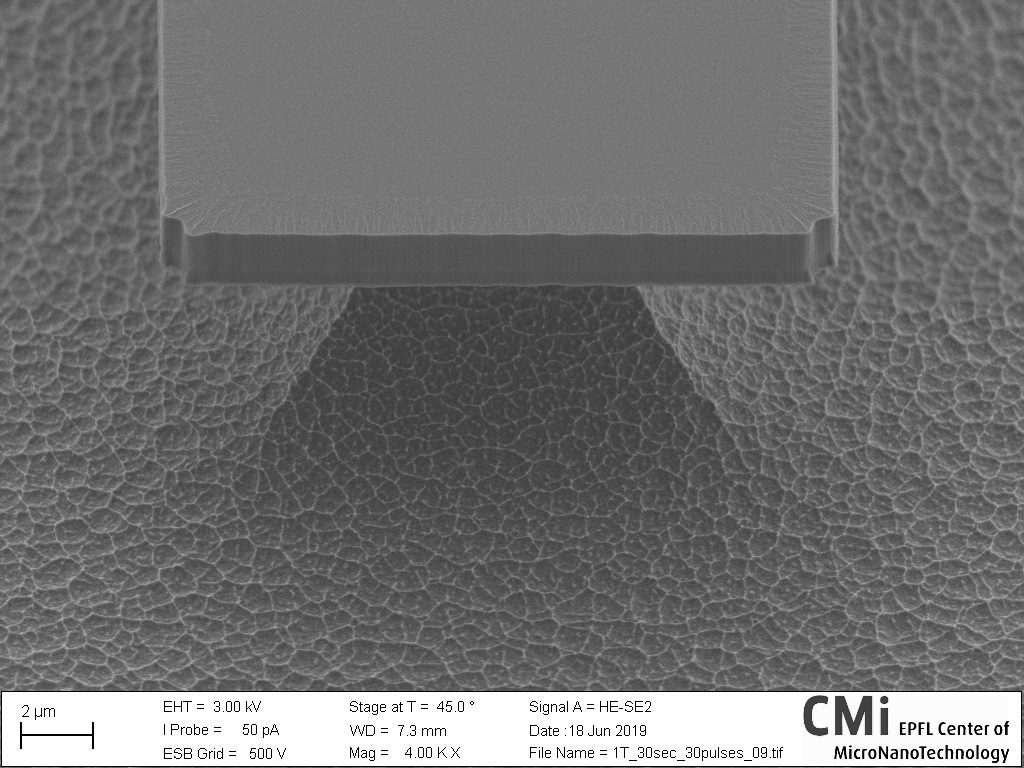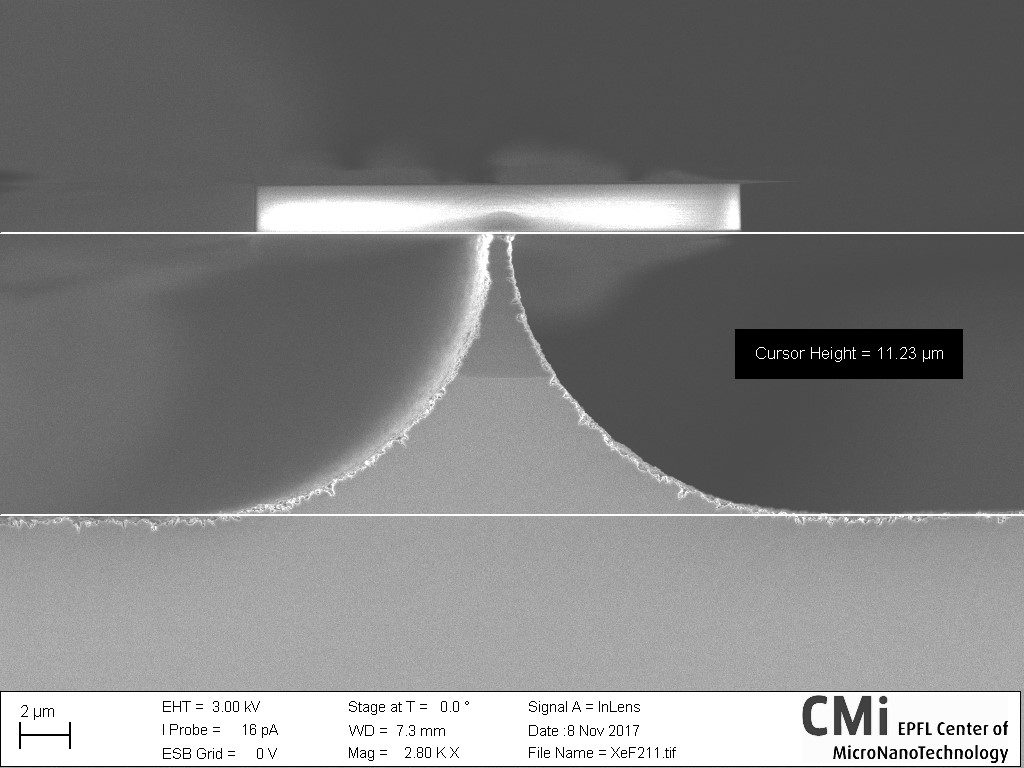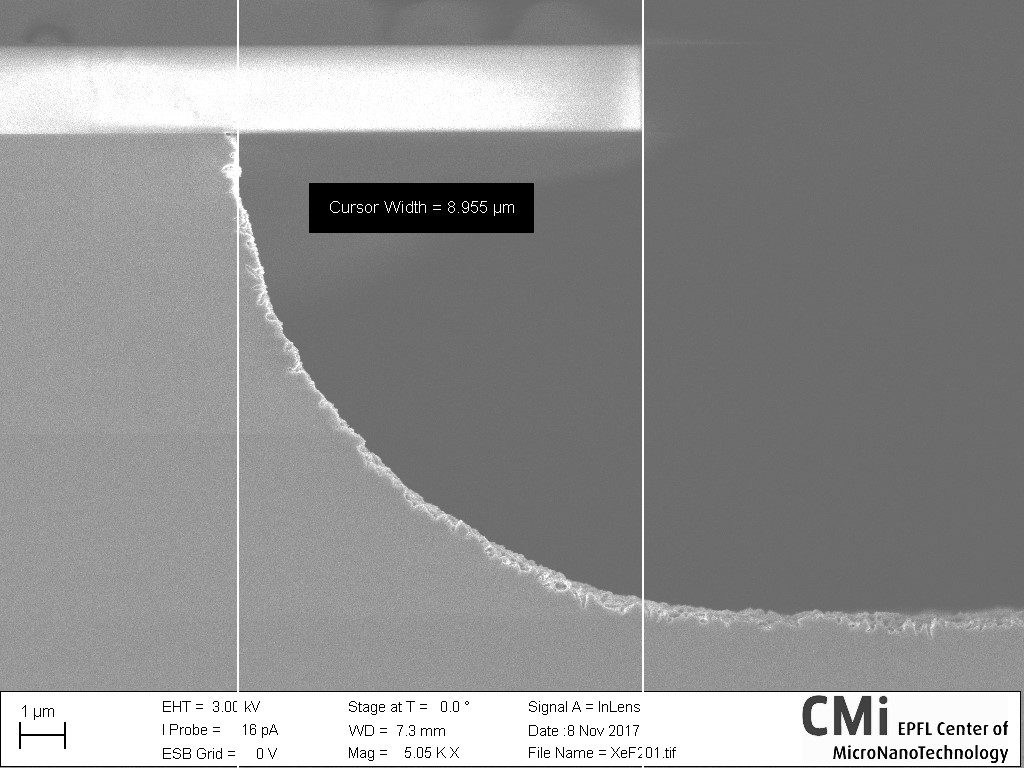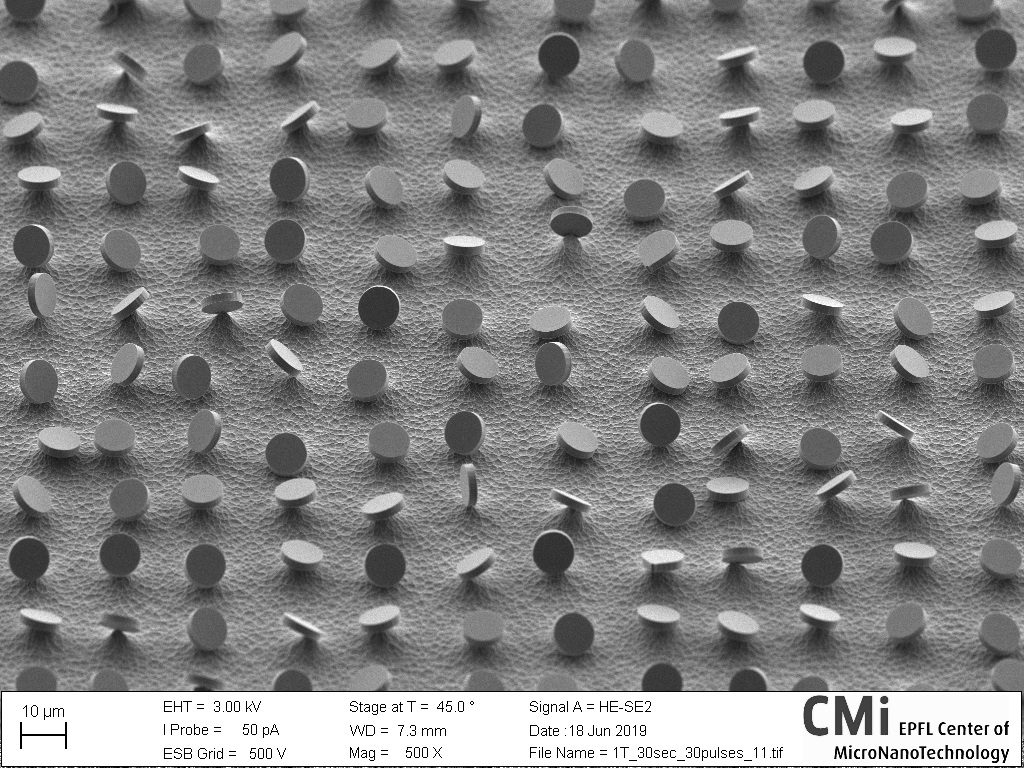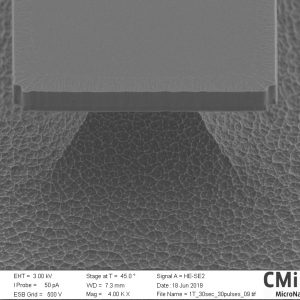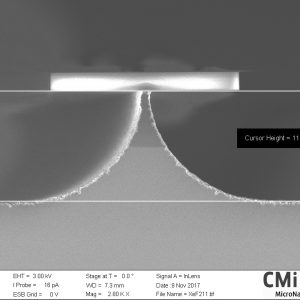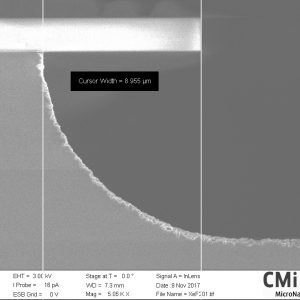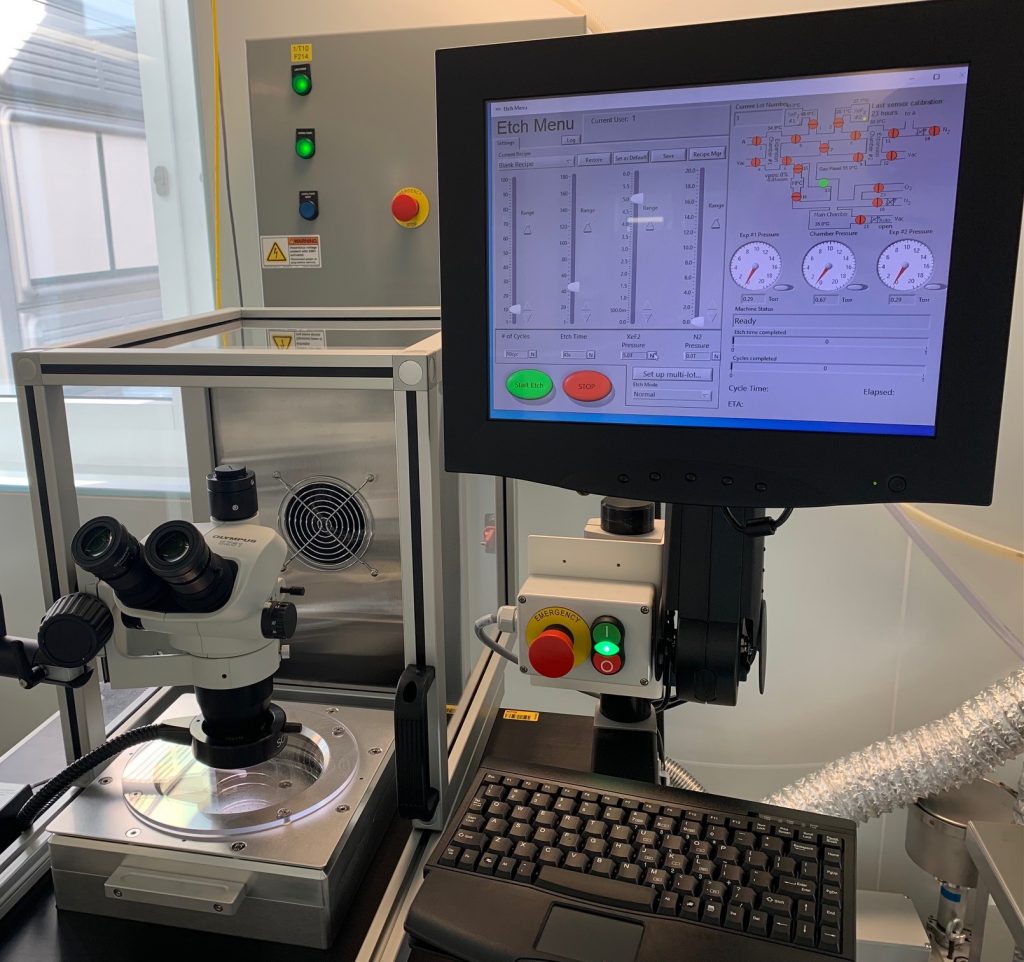
Contents
I. Introduction
To the human body, XeF2 is harmful if swallowed / skin contact / inhaled, and causes mild skin and eye irritation. It may cause breathing difficulty if inhaled.
The SPTS Xactix X4 system stores the XeF2 gas supply in a locked and ventilated gas box. The system is fitted with a built in, retractable fume hood with hardware interlock for safe operation.
Open load R&D etcher that handles multiple types of substrates within its 150mm diameter chamber.
Isotropic and controlled chemical etching of Si. Pulsed or continuous flow.
Dual expansion chambers design for process speed-up with fast pulse delivery.
Heating of key components to increase available XeF2 pressures and flows, and to avoid condensation.
Microscope for viewing through the transparent process chamber lid.
II. Equipment description
XeF2 is a solid powder with vapor pressure of ~4T at room temperature.
This powder is contained in a gas-like bottle fitted with a heated jacket (35°C) for a supply of XeF2 vapor at forced pressure (up to 6T in expansion chambers).
The XeF2 etching process is very sensitive to moisture: the system includes automatic pump/purge sequences after each new opening of chamber lid (load/unload).
In pulsed mode (normal mode), the XeF2 vapor first fills one expansion chamber to pressure setpoint. The vapor then flows from the expansion chamber to the etching chamber and remains for a preset time of etching. During this pulse etching time, a second expansion chamber gets ready to pressure setpoint, and flows to etching chamber after pump to base pressure is reached from previous pulse.
The system can also work as a continuous flow to the chamber with limited pressure (MFC Flow Through mode). The system will then use a mass flow controller for constant supply of XeF2 vapor to the etching chamber (max 10sccm with XeF2 bottle at 40°C) instead of pulsing from the expansion chambers.
The etching chamber is closed by a transparent lid, to allow for top-view inspection of the samples during etching with the microscope.
